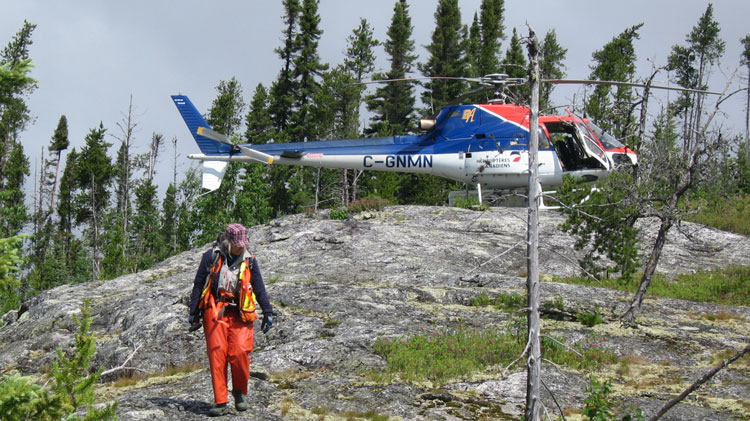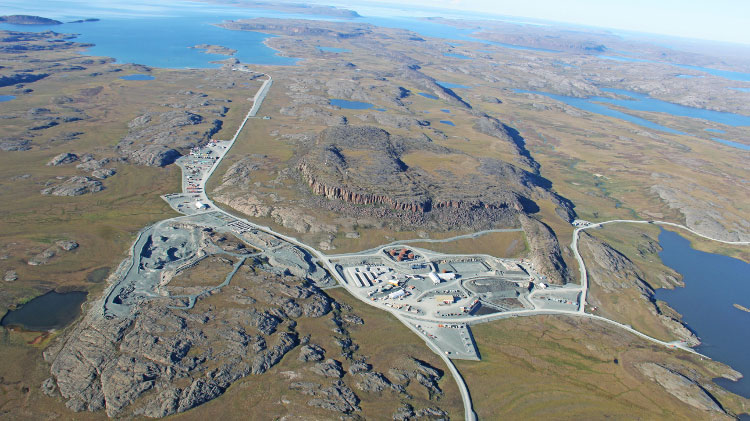A potash producer approached Hatch in 2009 to help the company figure out why it was not seeing the production it expected from its crystallization ponds. Courtesy of Hatch
Humans have been harvesting table salt from natural evaporation ponds for millennia. So simple is the basic mechanism, it is comprehensible to a middle school science class: as an aqueous solution or brine cools down or the water evaporates, dissolved ions precipitate out of solution and crystallize. Whether caused by a change in concentration due to solar evaporation or by a change in solubility due to cooling, salts that have crystallized out of their brine settle to the bottom of the pond to await harvesting.
Even today, lithium, potash and other solution-mined minerals are frequently recovered using crystallization ponds. Also known as cooling ponds or evaporation ponds, depending on the primary mechanism, these ponds can be found around the world, from the Great Salt Lake in North America to the Dead Sea in the Middle East, and from western China to the Atacama Desert of Chile. In areas with ample land and favourable climatic conditions (low ambient temperature and/or low precipitation), crystallization ponds offer an attractive alternative or supplement to energy-intensive mechanical evaporators and crystallizers.
But most crystallization ponds in use around the world are still rudimentary in design, built before the advent of modern computer-based analytical tools. So when a potash producer approached Hatch in 2009 about why it was not seeing the production it expected from its pond, it provided an opportunity to test some decades-long assumptions about crystallization ponds.
Field research
Understanding the complex dynamics at work in the ponds was no easy task. Angelo Stamatiou, a senior project engineer at Hatch with expertise in computational fluid dynamics (CFD), worked with the client to develop the best approach. “It was quite challenging because there are changes in bathymetry, concentrations, temperatures, climatic effects and transient effects,” he said.
“We spent a lot of time looking at the energy balance and understanding what the key parameters that influence it are,” said Mark Machado, a process engineer with Hatch’s minerals group. “It started with the main, obvious ones: the evaporative losses, the convection, conduction losses to the ground or to the walls of the pond. Then we advanced it further to include solar and radiative effects, and the heat that is generated through salt precipitating – the heat of crystallization.”
The multidisciplinary team built up CFD and dynamic simulation models from the individual terms of the energy balance. The latter were necessary because of the many parameters in a crystallization pond that change as a function of time. “The climatic conditions are changing, and as salts precipitate in the pond, the geometry changes, as does the bathymetry of the pond. That in turn influences how much it precipitates, and how it cools. So there are all these interactions,” Machado explained. “It took a while, but we had a very systematic approach incorporating all the major phenomena.”
“It was not something that happened overnight,” Stamatiou emphasized. “It was not easy to collect the data, either. It was a real field environment.” But the effort was worth it. “We were able to nail it down by systematically analyzing the data, using statistical analysis to identify the critical variables, so we could gain confidence in our models,” he said.
“We were able to get a really well-defined model, with all the good information that we had available,” added Machado. “The model compared and predicted well to what was actually happening in the field.”
Geometry lessons
With confidence in the validity of its model, the Hatch team turned its attention to optimizing the pond design by trying to maximize evaporation and heat transfer to the environment. Experimenting with various parameters – the length, width and depth of the pond, brine flow rates, and so on – the team began to see in its models where current crystallization ponds fall short.
“When we see old-style crystallization ponds, they often have some common characteristics,” Machado said. “They are usually deep, wide and relatively short. The ponds have a length-to-width ratio of less than four-to-one, probably even closer to two-to-one. They also have characteristics of ineffective flow configuration, where they experience short-circuiting and dead zones, where there is a lack of sufficient mixing in certain areas of the pond. This leads to a loss of uniformity in the pond, and in some cases a loss of effective area, which is like lost productivity.”
An optimized pond, Machado said, would look quite different. “Ours are the complete opposite. We’re looking at at least five units in the length direction by one in the width, and even bigger ratios than that – that’s kind of the lowest we’ll go. So they’re very long, narrow channels.”
Another big factor was the gap-to-length ratio, defined as the size of the opening between one pond and the next that the brine flows into, compared to the characteristic length of the pond. According to our models, that ratio is usually too small in older ponds – frequently as small as four or five per cent. During modelling, it became clear to Hatch that larger gap ratios promoted better flow characteristics, allowing better mixing and heat transfer by decreasing the size of the dead zones.
“We’ve also investigated the use of pond internals,” said Machado. “Investigating ways to induce stronger mixing and improve heat dissipation in the ponds.” Particular inlet feed configurations can also improve flow characteristics, as can different pond geometries nearer to and further from the inlet. With full optimization, Hatch estimates it can design a pond with up to 20 per cent more production than an old-style pond with the same footprint.
A repeatable solution
Hatch completed its work in 2013. The newly patented capabilities it has developed may next be used to design an optimized greenfield pond, or help existing operations predict future production or identify bottlenecks in their pond systems. Hatch is in talks with a number of potential clients to apply this technology to its ponds or future ponds.
“The good thing is that we have all of the models, and the logic behind the models is very sound and already in place,” said Machado. “What we will have to do is tailor the parameters in the model to the particular application – so the climatic conditions in that area, the chemistry that governs that system, the kinetics of that system. From there, we can run our models and get a very robust and optimized design, and do the engineering on that.”
With dry summers and cold winters – not to mention lots of flat land to work with – potash producers in Saskatchewan and other similarly favourable locations have optimal conditions for crystallization ponds using cooling. Plants there, as everywhere else, have had to use historical performance and strict rules to maintain crude consistency in their operations. Using the tools Hatch has developed, operators can instead take greater control of their production. “A lot of those operators won’t even be aware of the production potential of their ponds,” said Machado. “Until now, they haven’t had the ability to see what could be possible.”




